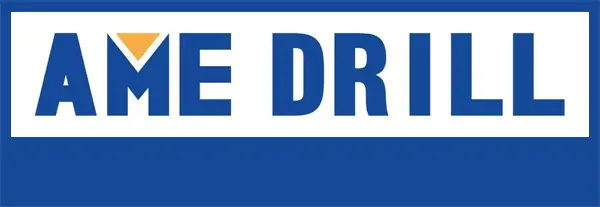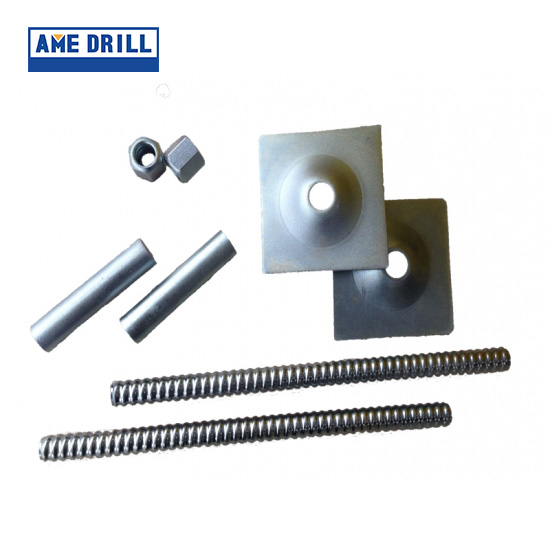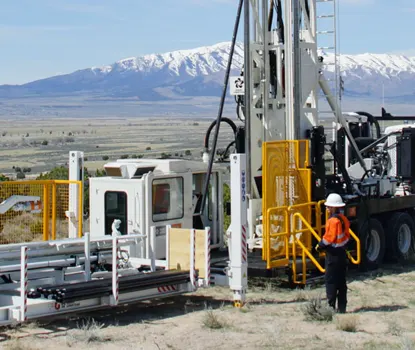In modern drilling operations—whether in mining, construction, or geological exploration—barras de perforación play a critical role. They are the connecting link between the drill bit and the drilling machine, responsible for transmitting torque, impact energy, and flushing medium deep into the earth.
However, the term “drill rod” has a dual meaning. In industrial drilling, it refers to the long, tubular steel rod used to extend drilling depth. In metallurgy and toolmaking, it describes precision-ground tool steel rods used for manufacturing drills, punches, and dies.
In this article, we’ll take a deep dive into Drill Rod Applications, exploring how they’re made, their major types, where they’re used, and what makes them indispensable across multiple industries.
1. What Is a Drill Rod?
A drill rod is a cylindrical steel bar engineered to connect the drill bit to the power source, transmitting both rotary motion and percussive energy. In top-hammer drilling systems, the impact is transferred from the hammer through the rod to the bit. In down-the-hole (DTH) systems, the drill rod (or pipe) acts as an air passage that delivers compressed air directly to the DTH hammer.
In tool manufacturing, “drill rod” refers to tool-grade steel stock—highly polished, precision-ground bars made from high-carbon or alloy steels. These rods are the starting material for making drill bits, taps, reamers, punches, dies, and various cutting tools.
2. Material Composition and Heat Treatment
Drill rods are typically made from high-grade alloy steels, such as 35CrMo, 45CrNiMo, or tool steels like O1, A2, and D2. The choice of steel depends on the intended drilling environment and mechanical stress.
En manufacturing process usually includes:
- Hot rolling the bar to desired diameter.
- Straightening and machining the rod surface.
- Precision grinding and polishing for dimensional accuracy.
- Heat treating (hardening and tempering) to achieve high strength and toughness.
Types of Drill Rods by Hardening Method
(Adapted from Metal Supermarkets data)
| Tipo | Cooling Medium | Características principales | Aplicaciones típicas |
|---|---|---|---|
| Water-Hardening (W) | Water | Economical, easy to machine | Hand tools, files, chisels |
| Oil-Hardening (O) | Oil | High toughness, good wear resistance | Punches, dies, drill bits |
| Air-Hardening (A) | Air | High dimensional stability, high hardness | Precision tools, cutting dies |
Proper hardening ensures the drill rod can withstand intense torsion, axial load, and vibration without bending or fracturing—a critical factor in demanding drilling applications.
3. Types of Drill Rods Used in Drilling Systems
Not all drill rods are the same. Each type is engineered for specific conditions and drilling methods.
1. Tapered Drill Rods
Used mainly in small-hole rock drilling, quarrying, and stone processing. The tapered design allows quick bit replacement and smooth energy transfer.
2. Threaded or Extension Rods
Common in mining, tunneling, and deep-hole operations. Threaded rods are connected end-to-end using couplings, forming a long drill string that can penetrate several hundred meters.
3. MF (Male-Female) Rods
These rods feature one male and one female threaded end, eliminating the need for separate couplings. The result is less energy loss, easier handling, and faster drilling cycles.
4. Integral Drill Rods
Forged as one piece with the bit, these rods are ideal for handheld rock drills in construction and quarrying, offering excellent reliability and portability.
5. DTH Drill Pipes
In Down-The-Hole (DTH) drilling, these pipes deliver compressed air to power the hammer at the bottom of the hole. The air also helps flush rock chips upward.
Illustration idea: A labeled diagram showing a DTH drill string—drill rig → drill pipe → hammer → bit—would clarify these relationships visually.
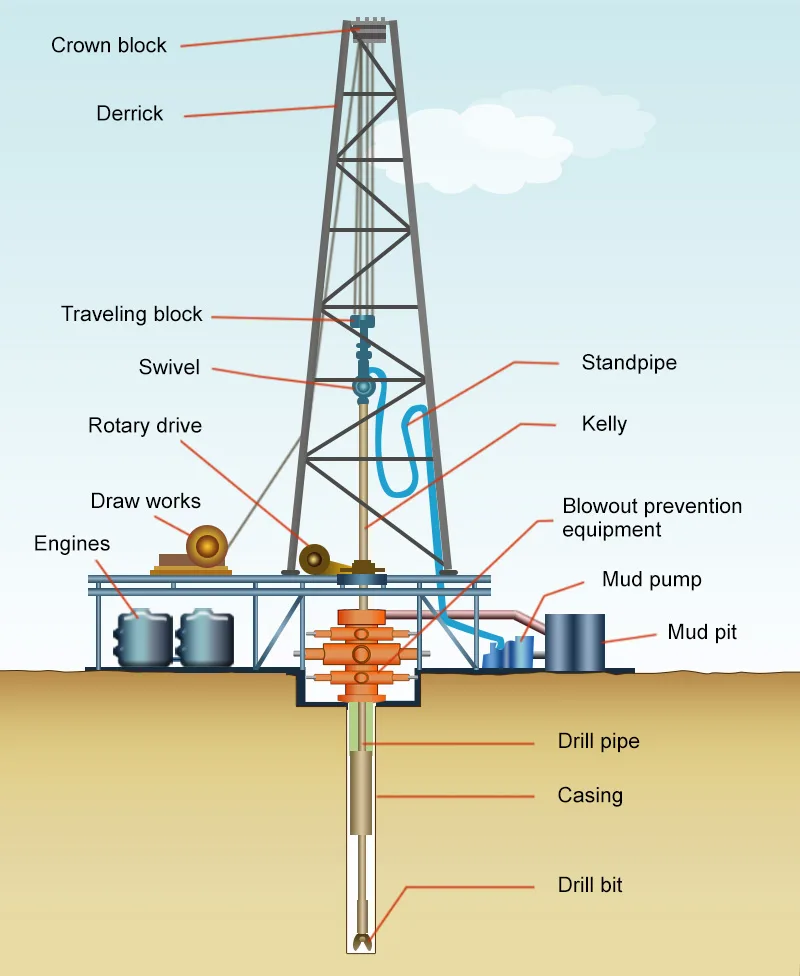
4. Main Applications of Drill Rods
The applications of drill rods are vast, ranging from mining and construction to precision toolmaking. Below are the major sectors where drill rods are indispensable.
A. Mining and Quarrying
Drill rods are essential for rock drilling, tunneling, and blasting operations. In open-pit and underground mines, they transmit impact energy from rock drills to the bit, breaking through hard rock formations.
Manufacturers like BestoneDrill y SinoDrills supply extension rods and MF rods designed for high impact resistance, long life, and efficient flushing performance in abrasive rock conditions.
B. Geological and Exploration Drilling
For mineral exploration and core sampling, drill rods connect the bit, core barrel, and rig. They must resist bending and torque while maintaining a tight seal for accurate core recovery.
C. Water Well and Foundation Drilling
Long threaded rods or DTH pipes are used in drilling deep wells, geothermal systems, and foundation piles. These rods ensure precise alignment and smooth air circulation in deep holes.
D. Construction and Civil Engineering
In civil works, drill rods are used for rock anchoring, slope stabilization, and micro-piling. Their durability allows reliable performance in both rotary and percussion drilling systems.
E. Toolmaking and Manufacturing
As emphasized by Metal Supermarkets, tool-grade drill rods are fundamental in manufacturing tools like reamers, punches, dowel pins, shafts, and cutting dies.
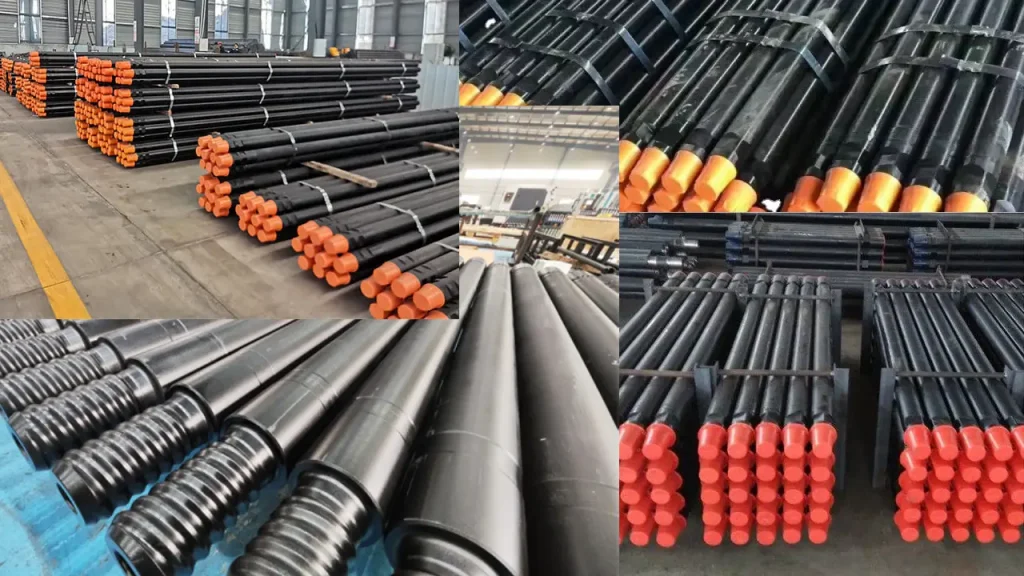
5. Advantages of Using High-Quality Drill Rods
According to LitechTools y TH Drilling Tools, premium-quality drill rods bring multiple operational and economic advantages:
- Enhanced Durability: Made from high-tensile steel, capable of withstanding intense impact and torsion.
- Consistent Energy Transfer: Precisely machined threads ensure minimal energy loss between joints.
- Ease of Maintenance: Modular design allows easy replacement of worn sections.
- Reduced Downtime: Better fatigue resistance extends service life, lowering overall drilling costs.
- Improved Safety: High structural integrity prevents breakage under stress, reducing operational risks.
6. Choosing the Right Drill Rod
Selecting the proper drill rod depends on the type of drilling operation, geological conditions, and equipment configuration.
| Application | Recommended Type | Material | Key Property |
|---|---|---|---|
| Surface Mining | Extension or MF Rod | 35CrMo | High tensile strength |
| Canteras | Tapered Rod | 45CrNiMo | Lightweight and shock-resistant |
| Perforación DTH | DTH Pipe | Alloy Steel | High-pressure air flow |
| Exploration Drilling | Threaded Rod | 42CrMo4 | High torque capacity |
| Toolmaking | Oil-Hardened Rod | O1 / A2 Steel | Precision machinability |
When choosing, consider:
- En método de perforación (top-hammer, rotary, or DTH).
- Rock hardness and abrasiveness.
- Drilling depth and bit size.
- Compatibility of thread type y coupling system.
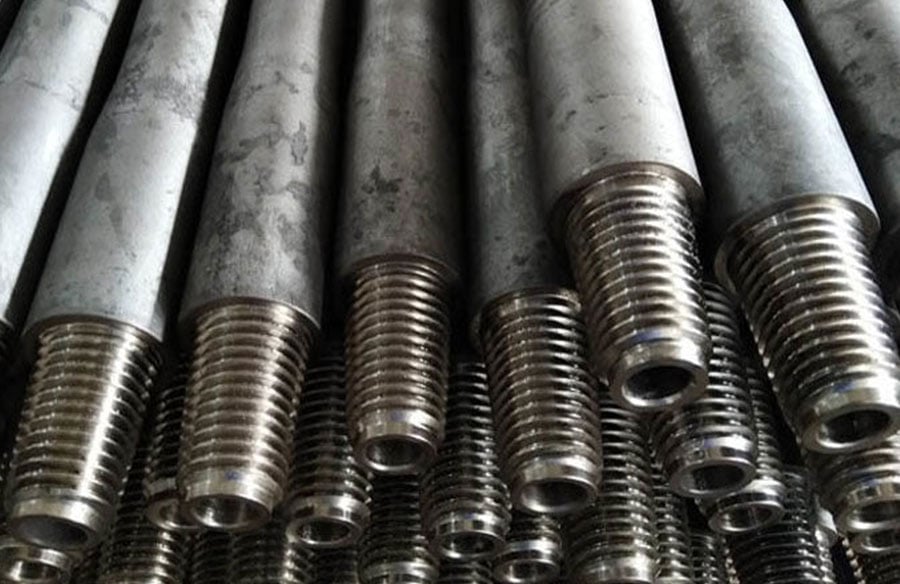
7. Maintenance and Best Practices
Proper care of drill rods ensures longer service life and consistent performance:
- Lubricate threads before and after every use to prevent galling.
- Inspect for cracks or wear after each drilling cycle.
- Avoid over-torquing, which can damage threads or cause breakage.
- Store rods horizontally in dry conditions to prevent bending or corrosion.
- Replace damaged sections promptly to avoid energy loss or tool failure.
8. Innovations and Future Trends
En drill rod industry is evolving with new materials and technologies aimed at improving efficiency and sustainability:
- High-strength lightweight alloys (like titanium-blended steels) are reducing energy consumption.
- Friction-welded connections enhance thread life and minimize vibration.
- Advanced coatings (nickel, zinc, or ceramic) provide better corrosion and wear resistance.
- Smart drilling systems now integrate sensors to monitor stress, temperature, and wear in real-time, optimizing maintenance schedules.
Manufacturers like SinoDrills, BestoneDrilly Terraroc Drilling continue to innovate with improved metallurgy, heat treatment, and machining techniques to meet global drilling demands.
9. Conclusion
In the world of drilling and toolmaking, drill rods are the backbone of performance and reliability. From transmitting power deep underground in mining operations to forming the core material for precision tools, their applications are diverse and essential.
Investing in high-quality drill rods—manufactured with advanced steels, tight tolerances, and durable thread systems—ensures better energy transfer, longer lifespan, and higher operational efficiency.
Understanding Drill Rod Applications not only helps in choosing the right tool for the job but also boosts productivity, safety, and return on investment in any drilling operation.
Welcome to order drill pipe products from AME Drill.
